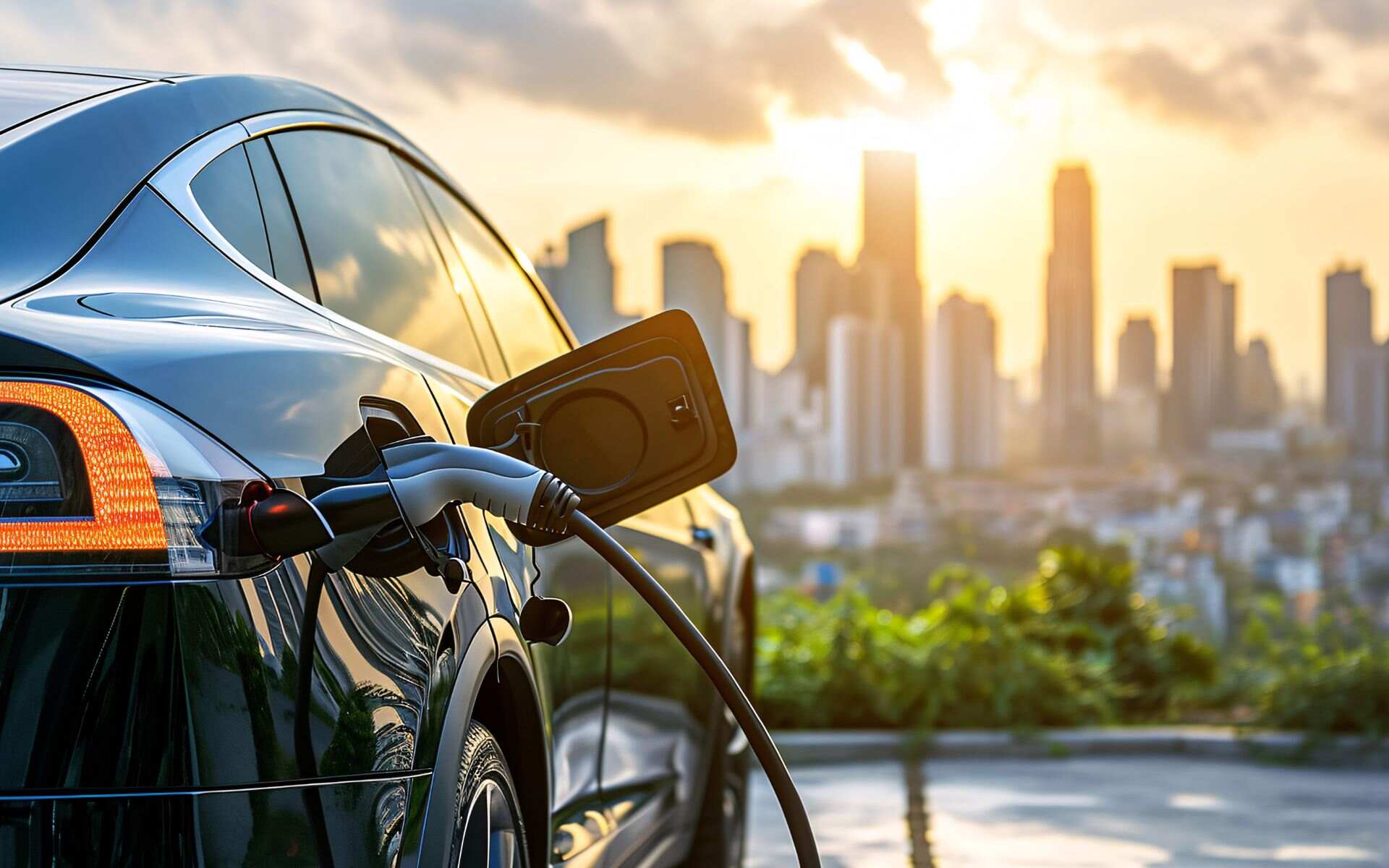A Utilities’ Guide to Navigating Electric Vehicle Infrastructure Challenges

7 Min. Read
With over two million electric vehicles on American roads (compared to a mere 100,000 in 2012), it’s evident that electric transportation is here to stay. As electrification increases, utilities will play a pivotal role in supporting the growth of electric vehicle (EV) charging infrastructure.
Over the last year, EV adoption rates rose faster than ever, bolstered by federal, state, and local initiatives and incentives such as EV charger tax credits, support for solar panel installation, and other direct measures to assist homes and businesses transitioning to electrified technologies. While this changing landscape presents utilities with several growth opportunities, it also poses its fair share of challenges as energy demand continues to rise.
A complete electric transition will require standardized, reliable connections across state lines and adequate charging stations in residential, commercial, and public settings. This leaves utilities with several crucial considerations.
How can energy companies effectively deal with the increased pressure on an aging infrastructure? What role will customers play in stabilizing an overworked grid?
In this guide for utilities on navigating electric vehicle infrastructure challenges, we outline answers for all these critical queries — and more.
Infrastructure Planning and Investment: Anticipating Growth
As an energy provider, it’s essential to outline a plan for the future. This involves anticipating areas that are likely to see increasing growth.
The Bipartisan Infrastructure Law offers an idea of what to expect. The law announced the Biden administration’s intention to have 500,000 publicly available chargers by 2030 — and invest $7.5 billion in electric vehicle infrastructure. Utilities must similarly invest resources and expertise to rise to the occasion and meet the growing need for electricity and the demand for enhanced reliability.
One area that will require serious investment is in creating a robust charging network. The Alliance for Automotive Innovation said in January 2024 that nearly 1.1 million Level 2 and DC fast chargers will need to be installed to meet the National Renewable Energy Laboratory’s estimate for 2030. That’s 414 chargers installed across the United States every day until 2030.
Other research, meanwhile, suggests that a complete transition to EVs will require 1.25 trillion kilowatt-hours of electricity annually. This indicates that our outdated electrical grid, which has seen little to no updates since its original installation decades ago, will need urgent upgrades — even if the demand isn’t as high as initially anticipated.
To address such challenges to the existing infrastructure, companies will need to ramp up collaboration with EV charging providers, charging network operators, and other key players to make more informed investment decisions regarding electric vehicle infrastructure and what energy needs their community will face in the near future.
Grid Resilience and Upgrades: Ensuring Reliability
Simultaneously, grid modernization efforts are essential to support the increasing demand. This will involve finding ways to enhance the capacity and resilience of the electric vehicle infrastructure without compromising stability and performance.
One way utilities can effectively handle the additional load is through the upgrade of substations, transformers, and distribution networks.
Implementing smart grid technologies will go a long way in helping manage the flow of electricity and enable real-time monitoring and control of energy usage. Smart meters, for instance, can help identify peak demand periods, anticipate load fluctuations, and implement demand response strategies.
In addition to upgrading, utilities must actively integrate renewable energy sources into the grid. A grid of the future will have to be far more dispersed than the traditional grids we work with today. This decentralization of energy production can help utilities manage costs while increasing production capabilities and resilience.
To upgrade the grid’s capacity for efficient and reliable power distribution, utilities must employ several crucial strategies. These include enhancing bidirectional power flow, energy storage integration, and smart grid systems.
Regulatory Compliance: Navigating Evolving Policies
As the market for EVs evolves, so do regulations and government policies surrounding electric vehicle infrastructure. It’s crucial for utilities to stay up to speed.
The first task will be to assess the scope of these regulations. For instance, the California Public Utilities Commission regulates all EV charging installation programs offered by utilities in the state. Utilities involved in installation projects must also adhere to rules outlined in the National Electric Code.
Beyond that, it’s crucial to identify potential areas of contention. For example, state regulations could introduce changes to regulate price hikes, necessitating utilities to find new ways to balance fair pricing and financing investments.
Collaboration is one way to ease compliance challenges. Energy providers could enlist the support of electricians to comply with EV charging station regulations or startups to find innovative ways to integrate EV charging into the grid using more cost-effective and sustainable methods.
Advanced artificial intelligence and machine learning technologies could also monitor and analyze regulations more effectively.
Customer Engagement and Education: Fostering Awareness
Utilities must also devote resources to educating customers on the benefits of installing EV chargers at home. The Inflation Reduction Act, for instance, allows customers who install EV chargers a tax credit of 30% of the hardware and installation cost. This incentive also applies to additional equipment, such as bidirectional EV chargers.
Similarly, over 40 states in the U.S. offer credits and grants that benefit EV owners. Making customers aware of these benefits is crucial in encouraging EV adoption and ensuring a robust electric vehicle infrastructure.
To stay updated on the latest policies and EV charging safety requirements, we recommend following the State of Charge YouTube channel, where expert Tom Moloughey shares his detailed insight on various aspects of EVs and charging infrastructure.
Customers must also be made aware of how they can positively impact grid stability and be encouraged to do so through rewards and incentives.
For example, customers should know that charging EVs during off-peak hours can ease the stress on the grid. The Pacific Gas & Electric Company estimated in 2019 that if 30% of EV owners charged their vehicles during off-peak times, only 15% of Bay Area feeders would need to be upgraded instead of 60%. Utilities can incentivize sustainable EV charging practices by implementing time-of-use pricing policies.
Bidirectional chargers, which leverage the EV’s battery to send power back to the grid during peak hours or outages, are another game-changer in building a more resilient grid — considering they turn EVs into an additional storage system on wheels.
Utilities can offer customers digital tools to drive further engagement in demand response programs. Such tools can provide real-time data on energy prices, charging availability, and grid conditions, allowing customers to make informed decisions.
Technology Integration: Embracing Innovation
Smart grid technologies aren’t just crucial for building a resilient infrastructure—they are also vital in managing and regulating the flow of electricity during EV charging sessions. These advanced systems allow utilities to monitor and control energy use in real-time, optimizing the utilization of available resources.
With smart meters, utilities can gather data on EV charging patterns, grid conditions, and overall electricity consumption. This data lets them identify peak periods, anticipate load fluctuations, and implement demand response strategies.
AI technologies can be leveraged to access and process the large amounts of data produced by various smart grid devices. This data can help identify where demand will occur, pinpoint when EV owners are charging their vehicles, and assess the impact of various incentives and programs on the grid.
While electric vehicles and electric vehicle charging infrastructure are leading the charge for electrification in America, these aren’t the only technologies that can support your customers as they transition to more a more sustainable, electrified way of life. Other technologies such as solar panels and battery storage can help provide increased energy resilience to homes and businesses.
In addition to providing clean renewable energy for your residents, these energy transition technologies can strengthen the grid by allowing customers to send or sell excess electricity back to the grid, helping to create a more resilient and unified infrastructure in a world of growing energy demand.
An Electrifying Future for America’s Electric Vehicle Infrastructure
By addressing electric vehicle infrastructure challenges head-on, utilities can transform into the leaders of electrification — on the macro level, as well as for individual residential and commercial customers.
Given the rapid rate of EV adoption, there’s no better time to invest in grid upgrades, integrate advanced technology, and bring customers on board with mutually beneficial incentives and rewards.
As an electrification leader with over 269,000 EV charger installation projects and the highest customer satisfaction rating in the industry, Qmerit can be the perfect partner on this journey. We offer utilities single-source solutions to help improve grid reliability, boost participation in managed charging and other EV-specific rate programs, and provide your customers with the safe, high-quality EV charger installations they need.
With the largest network of certified electrical contractors trained in the safe and proper installation of energy transition technologies and building out electric vehicle infrastructure for homes and businesses, Qmerit can help support your customers as they journey into a more sustainable life.
Contact Qmerit today to learn more about how we can help you navigate the future of your community and address the challenges of building a more resilient energy grid and electric vehicle infrastructure.
